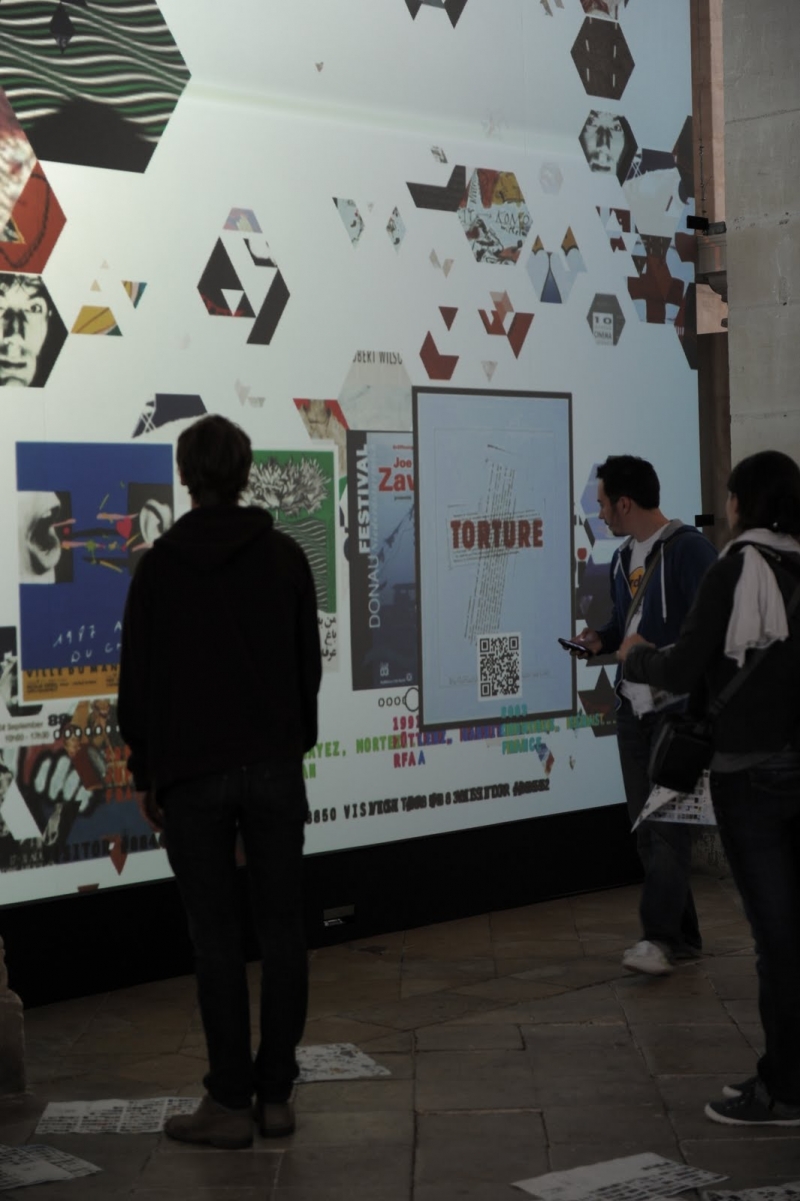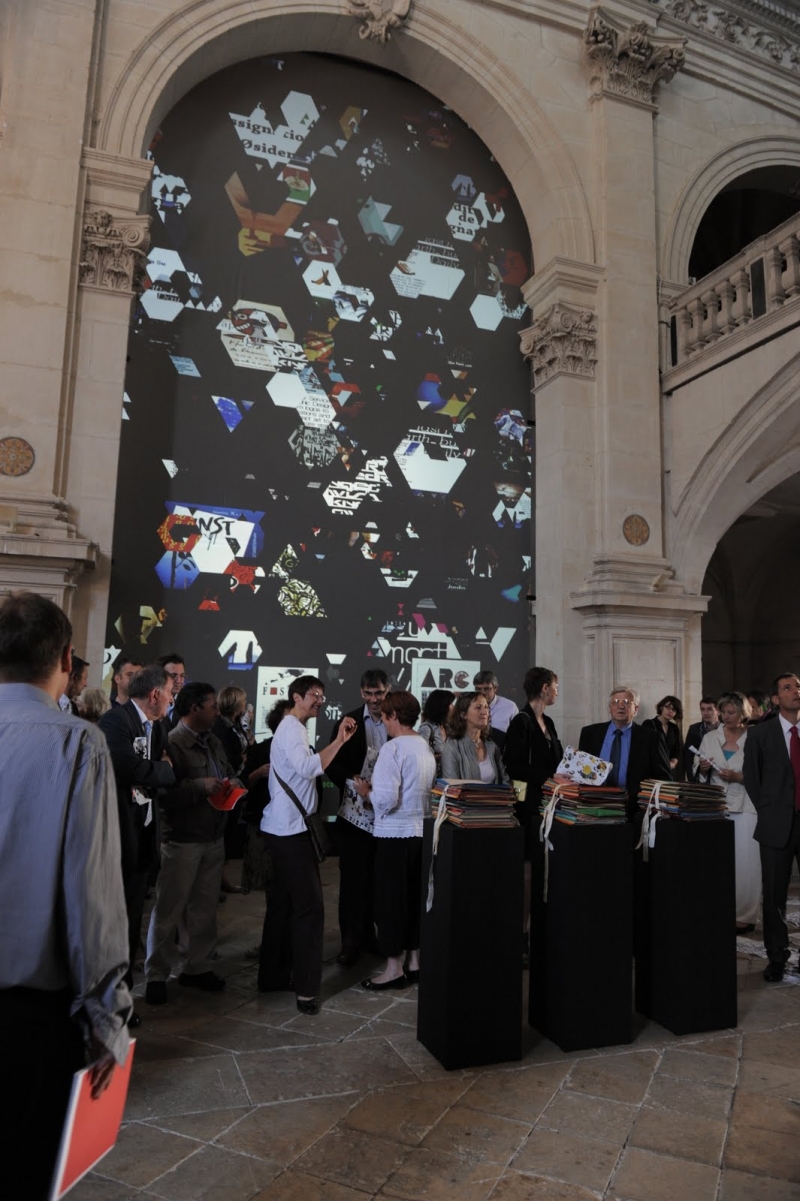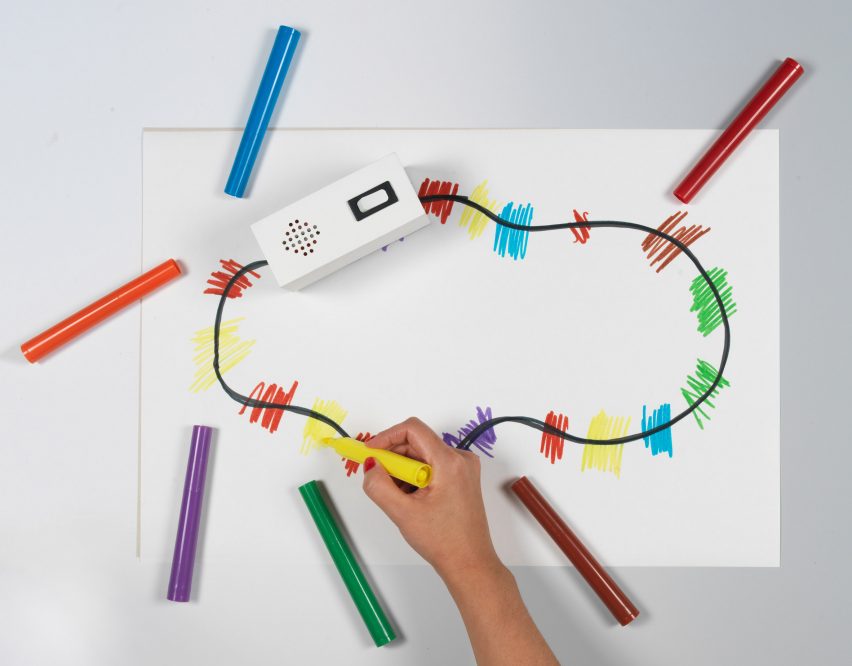LUST Studio
During the 22nd International Poster and Graphic Design Festival of Chaumont, LUST (NL) took over the Chapelle des Jesuites with an in-situ piece intended to build bridges between the Festival's pas and future. Extending the notion of archiving to the future and to hypothetical pasts.Prior to the exhibition, they complied a visual and textural database. Visitors at La Chapelle could interact with this 'polyarc' to make their own digital publication, before adding their own contributions to it.
During the festival visitors could pick up one-of-a-kind print-on-demand booklets at La Chapelle which could be inserted into this dossier. This dossier functions as a 'snapshot' of a constantly growing archive. Visitors were invited to contribute to this archive by sending Twitter messages. Any messages sent will be sorted and made accessible via the installation and printed for the dossiers.
- This idea of having a database of textures and visuals to represent the space as well as this idea of future and past.
- Could this be used in my own project, due to the lack of imagery, the textures could be used or the idea of soundscapes inspired by the audio recordings.


Audio Translated to Visuals
What does your city sound like as a typefaceA synthetic type experiment that freezes sound data into letter forms.
Ran Zheng’s thesis project LOOK/HEAR uses sound to affect the shape of letterforms, creating an astonishingly rich and complex three-dimensional typographic system. Her letters respond to a range of ambient recordings made in New York City—from the relative stillness of Central Park to the clamor of the subway—as well as to aural input from visitors to her thesis exhibition.
Zheng drew each letter on a 15” x 15” grid, then rendered it with 3D software into 9 layers containing 9 different sound channels. The 3D geometry creates a visual system where different sounds can affect different layers of the letter. When the layers are mixed together and animated, the letters change style in real time, responding to the sound input.
insert type, type 2, type 3 images
- Don't know how to use software that influences a visual with audio but think of other ways I could do this. Loud speakers with water over the top to augment an image from the fringe, what could I do with these.
Yuri Suzuki
Suzuki's work explores how the world of sound can be made more tangible, through its relationship with objects and technology.Colour Chaser
This is a toy-like project which was developed in response to Suzuki's own struggles making music. Being dyslexic one of the biggest obstacles for him was being unable to read musical scores.
The Colour Chaser was born out of the desire to create a type of musical notion that could be drawn by anyone. A robot follows lines drawn in felt tip pen, and when it passes over a colour, it plays a corresponding sound.
- This idea of the visuals interacting with the audio is presented in such a simple but effective way, having a change in visual environment triggering a change in sound is a facinating concept.
- Could this be included in the final piece, as a part of project mapping, making the experience even more interactive?
Berlin Exhibition
I went to Berlin over the summer and stumbled upon an exhibition, I don't know the name of the artist or the exhibition as I didn't document much (not thinking I was going to need it). There were multiple pieces of interactive art in a very basic form. The main medium used was cardboard and anything that required audience participation had tin foil as the conductive element.
There were pieces where you'd touch the tin foil and this would trigger an effect. One of the more advance pieces was sound mixing board (see below).
I didn't expect the exhibition to be what it was from first glance as the location was really random and not many people were there, but this just added to the experience more. By using such everyday materials it didn't feel an untouchable as a regular exhibition does, it was inviting and playful.
- Translating this into the experience with my screen based design, having the materials feel as though you're meant to interact with them.

No comments:
Post a Comment